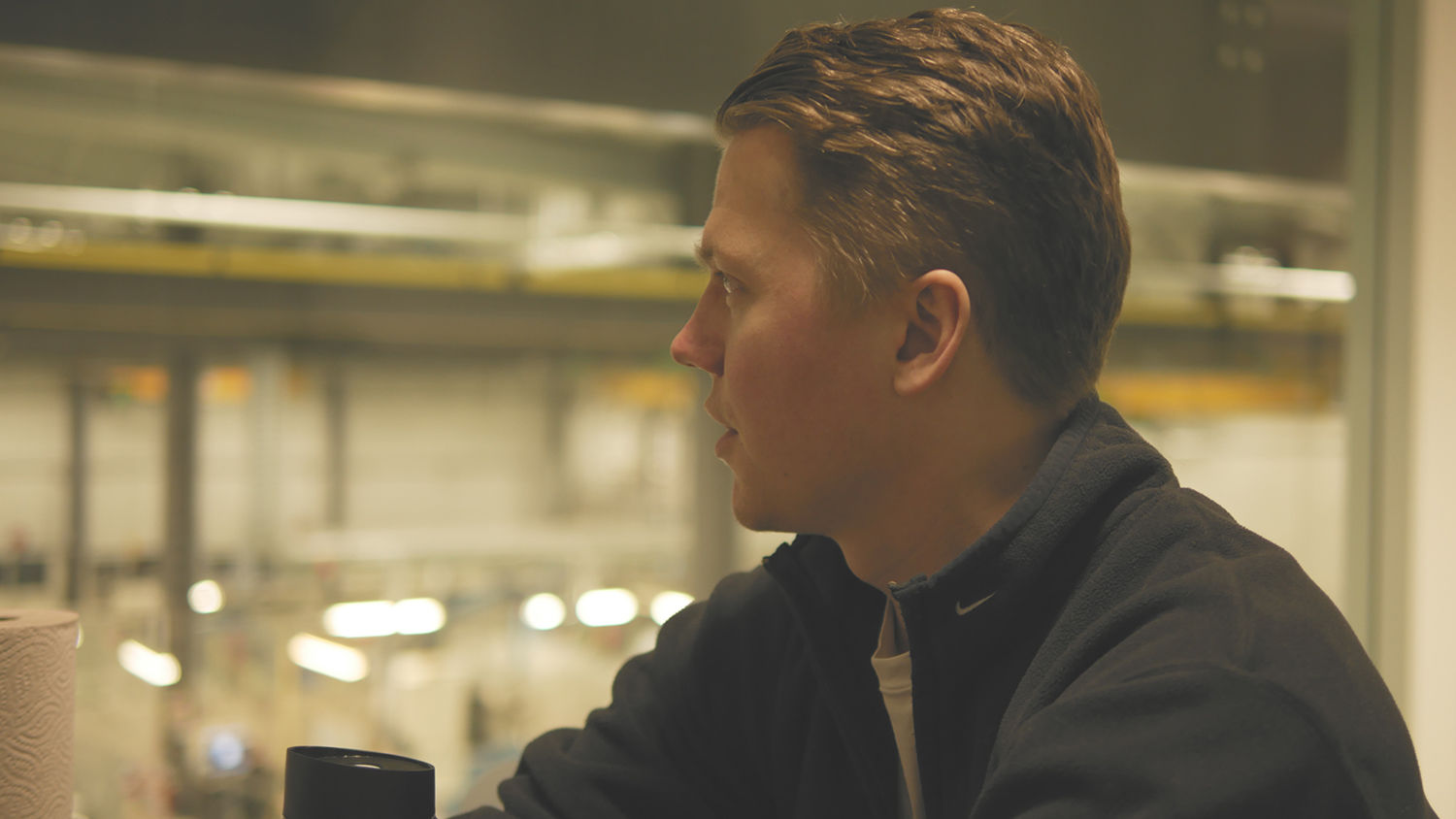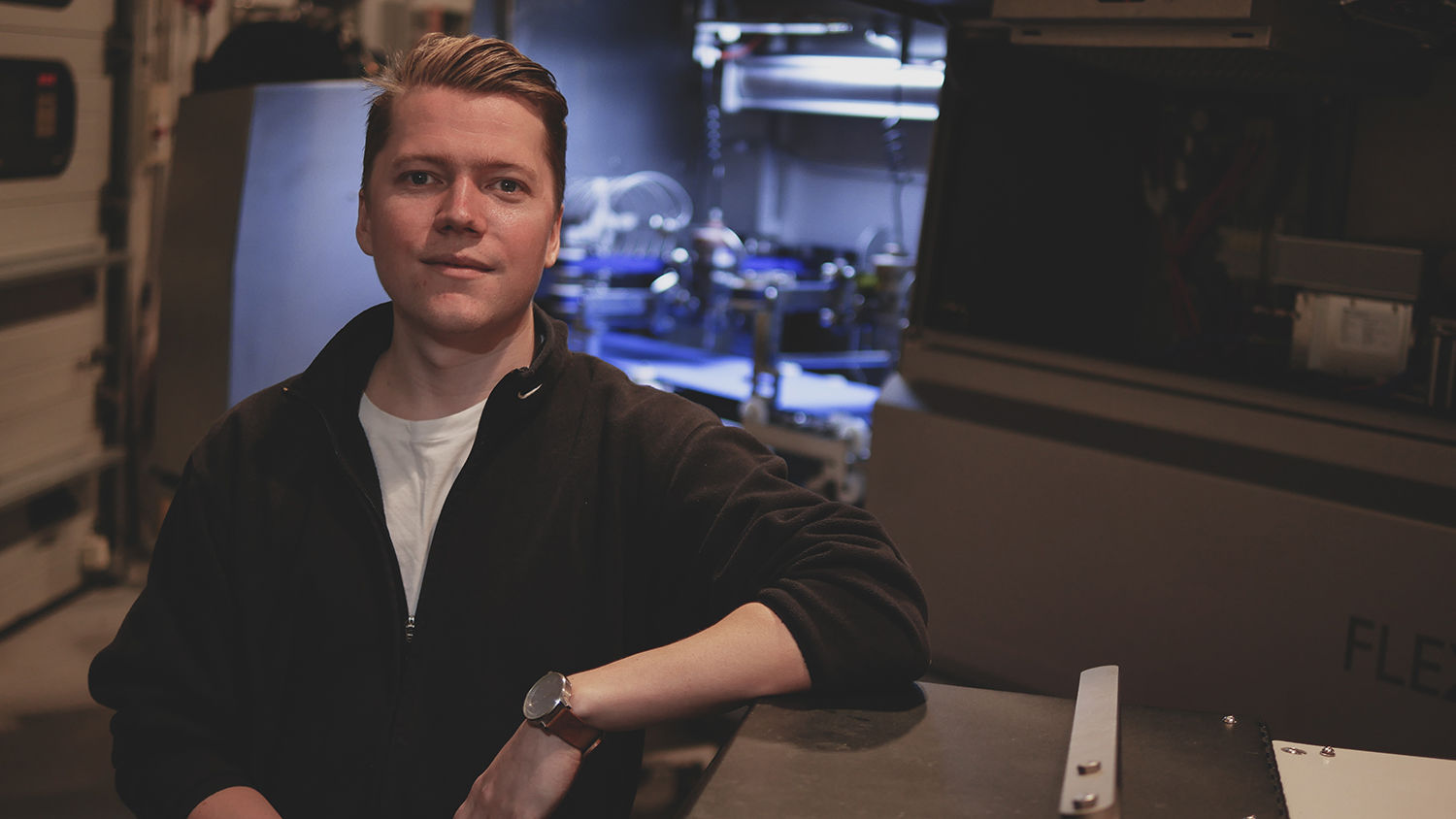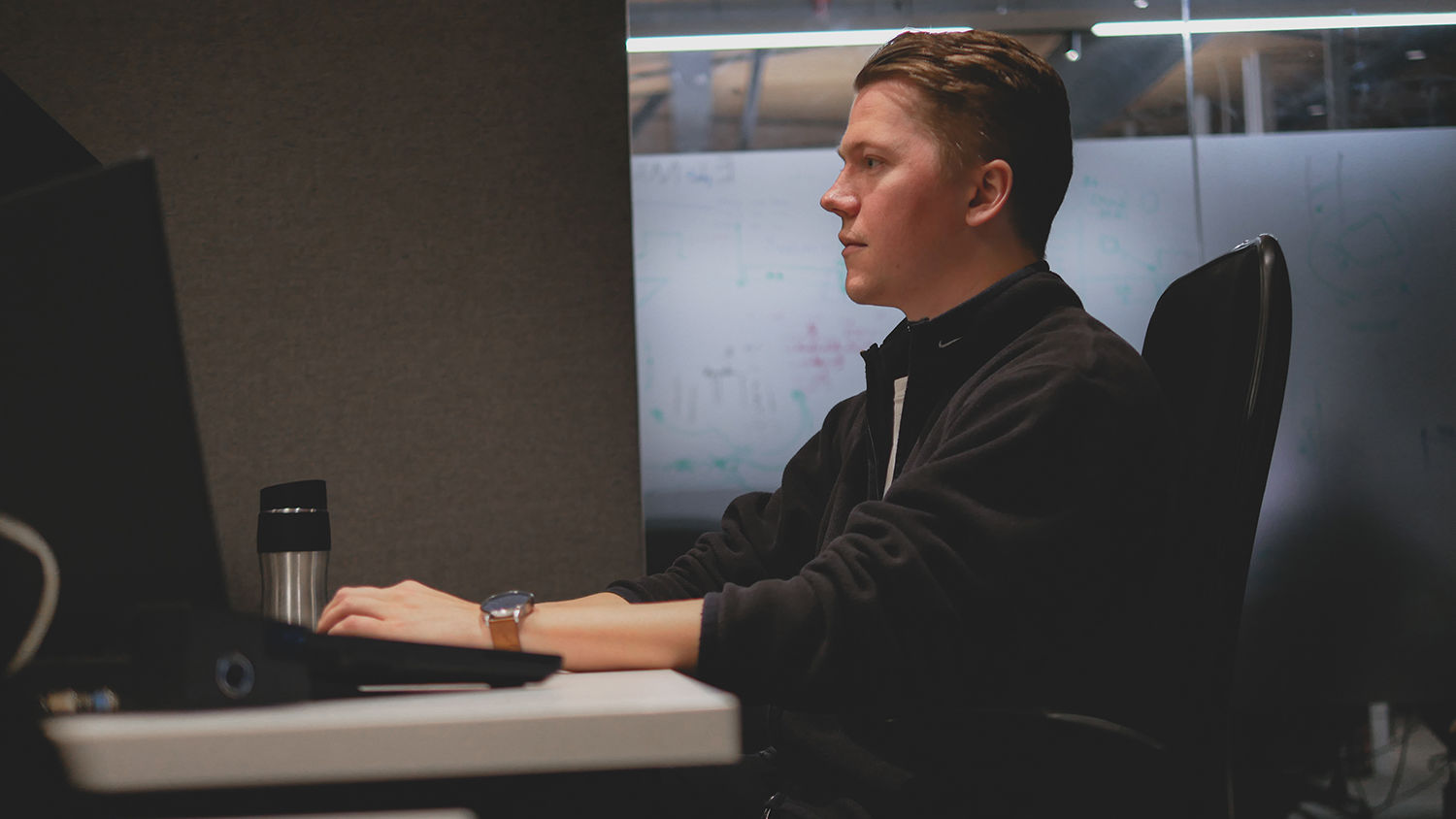How deep learning can improve fish processing
One of the key foundations of the so-called fourth industrial revolution is Artificial Intelligence. We hear concepts like AI being talked about, but sometimes need practical examples of its use in this much discussed revolution - one that promises to make our life easier and our work more efficient.
One practical example of the use of AI in an established industry, i.e. fishing, in Iceland is a new software that a recent graduate from RU has developed for Marel, one of Iceland´s leading production companies. Elías Ingi Elíasson graduated last spring with a MSc degree in Software Engineering. His final project was developed with Marel and after its completion he joined the company as an employee, working in one of Marel´s software development teams.
 Elías looks over the manufacturing floor at Marel.
Elías looks over the manufacturing floor at Marel.
When you walk around Marel´s headquarters and factory in Garðabær you see a vast production floor with food processing machines being built and tuned, and the staff, engineers and machinists, working together to solve arising problems - whether it be with tools or in front of the computer. Elías Ingi and his team are assigned to product development where they work on a machine called FleXicut. They have their own workshop along with more traditional computer facilities.
Elías says he approached his final project from a quality control viewpoint as he researched how deep learning methods could be used in an image identification process - as codfillets pass through the machine. "As the project was only for one semester it had to be limited to the identification of six known categories or flaws that can be found in the fillets, and three different convolutional neural networks to analyse them with.
The images were captured by a colour camera and traditional fillet flaws were analysed. This could be an inadequate cut, blood or even worms." The results of the image analysis can be used for various purposes, to assess the quality of fillet processing in earlier stages and to sort raw material into different categories to maximise it´s value.
 In the workshop in front of the FleXicut processing machine.
In the workshop in front of the FleXicut processing machine.
In some cases, flaws can be fixed straight away. You can also gather valuable data that can of course be utilised. „With my project we wanted to compare different methods in order to make the image analysis quicker as it has to be made in real time."
The adjustability of these methods is also what makes the possibilities given by AI in fish processing interesting. For a machine like FleXicut that removes bones from fish fillets, the cut for a cod fillet or haddock is well known as these are the types of fish that are common in Northern Europe. However, these machines are sold all over the world and the manufacturers of Marel do not know the anatomy and bones in every single type of fish. "Here AI comes in very handy as new demands need to be met in a short amount of time."
Elías says he enjoys continuing to develop the software at Marel. "I like how RU is connected to companies in Iceland. Places like Marel have a cooperation agreement with the University and will even bring into the departments suggestions for research and often want to develop them further. In my case, I looked at the slides from the introductory meeting about sponsored masters projects that is held every year. I encourage all students to take a look at the possibilities.
 I spent a semester at Marel working on my thesis and enjoyed good facilities and assistance from the staff here and of course my RU supervisors, Stephan Schiffel and Yngvi Björnsson who are both at the Department of Computer Science."
I spent a semester at Marel working on my thesis and enjoyed good facilities and assistance from the staff here and of course my RU supervisors, Stephan Schiffel and Yngvi Björnsson who are both at the Department of Computer Science."

